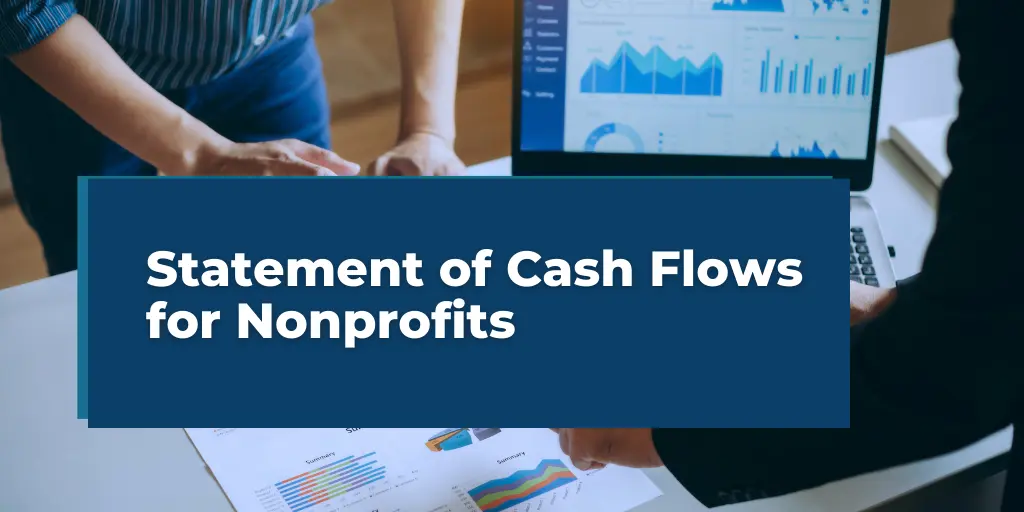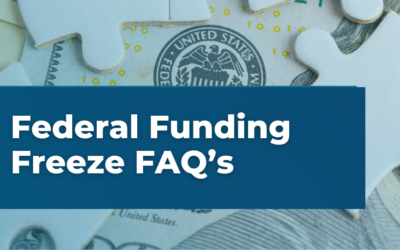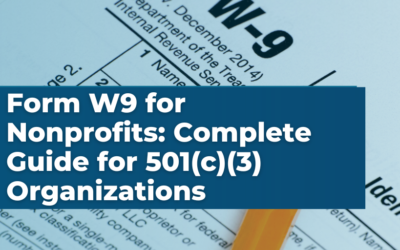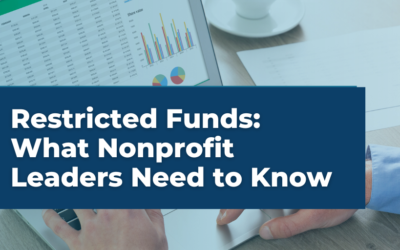In the realm of nonprofit financial management, the Statement of Cash Flows (SCF) is a critical tool that often goes underutilized. It is more than just a financial statement; it is a comprehensive report that provides deep insights into the liquidity and financial operations of your organization.
Unlike the balance sheet that shows what you own and owe at a point in time, or the income statement that focuses on your organization’s revenue and expenses over a period, the SCF tracks the amount of cash coming in and going out of your nonprofit. This visibility into cash movements is essential for effective strategic planning, helping leaders make informed decisions about day-to-day operations and long-term investments. Understanding how to read and interpret this statement is crucial for maintaining the financial health and sustainability of your nonprofit.
The Basics of the Statement of Cash Flows
The Statement of Cash Flows (SCF) provides a dynamic overview of the cash transactions within your nonprofit. It helps you track where your money comes from and how it’s spent over a specified period. Here are the fundamental aspects of the SCF you need to understand:
Purpose of the SCF:
- Transparency: Offers clear visibility into all cash inflows and outflows.
- Accountability: Ensures that every dollar is accounted for and spent as intended.
- Planning: Aids in effective cash management and financial planning.
Key Sections of the SCF:
- Operating Activities: These include transactions related to the nonprofit’s primary activities such as receiving donations, paying salaries, and other operational expenses.
- Investing Activities: This section covers transactions involving the purchase or sale of long-term assets like buildings and equipment, and investments in securities.
- Financing Activities: Includes cash flows related to borrowing and repaying debts, receiving restricted funds, and other financing sources.
Differences from Other Financial Statements:
- Unlike the balance sheet and income statement, the SCF focuses solely on cash transactions, ignoring non-cash activities like depreciation or accrued expenses.
- Provides a link between the balance sheet and income statement by detailing the changes in cash and cash equivalents, thus offering a complete picture of the financial status.
Understanding these basics will empower you to use the SCF as a tool for more than just compliance; it becomes a strategic asset in financial decision-making and organizational management.
Operating Activities
The operating activities section of the Statement of Cash Flows includes the cash transactions directly related to the primary mission and activities of your nonprofit. This section is vital for understanding how well your organization manages its core operations financially. Here’s what you need to know:
Definition and Importance:
- Operating activities involve all cash flows from the central, day-to-day functions of the nonprofit. This includes cash received from grants, donors, and payment for services rendered, as well as cash paid for salaries, supplies, and other operational expenses.
- Analyzing this section helps gauge the operational efficiency and effectiveness of your nonprofit in generating and using cash.
Common Cash Inflows and Outflows:
- Inflows:
- Donations received
- Revenue from fundraising events
- Grants
- Payment for services provided
- Outflows:
- Payments to suppliers and contractors
- Salaries and wages
- Utility bills and rent
- Other operational expenses
Interpreting Cash Flow from Operating Activities:
- A positive net cash flow from operating activities indicates that the nonprofit is generating sufficient cash from its core operations to sustain its activities, which is a sign of financial health.
- A negative net cash flow, however, suggests that the nonprofit may need to reassess its funding strategies or operational efficiency.
Example:
- Consider a nonprofit that primarily relies on grant funding and donations. If this section shows consistent positive cash flow, it means that the organization is effectively managing its core funding and operational expenses. Conversely, a negative trend might trigger a review of spending policies or fundraising strategies.
By closely monitoring the businesses operating activities in the SCF, nonprofit leaders can make informed decisions to enhance operational efficiency and ensure financial sustainability. This section not only provides a snapshot of the financial health but also serves as a guide for potential adjustments in management practices.
Investing Activities
Investing activities in the Statement of Cash Flows reflect transactions involving the acquisition and disposal of long-term assets, as well as investments made by the nonprofit. This section is indicative of how a nonprofit is planning for its future growth and sustainability through asset management. Here’s what leaders need to understand:
Definition and Scope:
- Investing activities include purchases or sales of physical assets, such as property, buildings, or equipment, and investments in marketable securities like stocks or bonds.
- These activities can significantly impact the nonprofit’s cash flow and are often related to strategic decisions about growth and resource allocation.
Types of Transactions:
- Purchases of assets: Cash outflows for buying new equipment or property to expand operations or improve capacity.
- Sales of assets: Cash inflows from selling off assets, which may indicate restructuring or capitalizing on asset investments.
- Investments: Cash used to purchase securities or other investment instruments, or cash received from the sale or maturity of these investments.
What Investing Activities Reveal:
- A high level of investment activity can suggest that the nonprofit is in a growth phase, investing in assets that will contribute to long-term goals.
- Conversely, significant sales of assets might indicate a strategic shift or a need to liquidate assets for cash flow purposes.
Example:
- A nonprofit educational institution might purchase a new building to accommodate more students or invest in new technology to enhance learning experiences. The cash flows related to these transactions would appear under investing activities, providing insights into the institution’s growth strategies.
Understanding the cash flows associated with investing activities helps nonprofit leaders assess whether their asset management strategies are aligned with their organizational goals and financial health. It also assists in planning future investments and deciding when it might be necessary to reallocate resources or adjust strategic directions.
Financing Activities
Financing activities reported in the Statement of Cash Flows deal with the flows of cash related to external funding and financial obligations that affect the nonprofit’s capital structure. This section reflects how the organization raises capital and repays it, including changes in debt levels and contributions that are restricted for long-term use. Understanding this part of the SCF is crucial for assessing financial sustainability and planning future business activities.
Definition and Elements:
- Financing activities involve transactions that result in changes to the size and composition of the equity and borrowings of the nonprofit.
- Typical activities include receiving long-term donations, issuing debt, repaying principal on existing debts, and making lease payments.
Key Types of Transactions:
- Debt financing: Includes proceeds from loans or issuance of bonds and payments made to reduce outstanding borrowings.
- Equity financing: Encompasses contributions and grants that are restricted by donors for long-term projects or endowments.
- Repayments: Payments made towards reducing the principal of debts or lease obligations.
Impact on Nonprofit Strategy:
- Positive cash flow from financing activities indicates that a nonprofit is raising more capital than it is repaying, which can be essential for funding expansion or new projects.
- A negative cash flow suggests that the organization is in a phase of reducing its debt or paying off long-term obligations, which might impact its ability to fund new initiatives.
Example:
- Imagine a nonprofit that has embarked on a capital campaign to raise funds for a new community center. The cash inflows from this campaign, potentially reflected in the financing activities, will provide the necessary working capital to begin construction. Similarly, any payments made towards a construction loan would appear as outflows in this section.
By carefully analyzing financing activities, nonprofit leaders can determine the effectiveness of their fundraising efforts and debt management strategies. This insight is invaluable for ensuring long-term viability and for communicating financial health and strategy to board members, donors, and other stakeholders.
Analyzing a Statement of Cash Flows
Effective analysis of the Statement of Cash Flows can provide nonprofit leaders with crucial insights into the organization’s financial health and operational efficiency. Understanding how to read and interpret this statement is key to strategic financial planning. Here’s a step-by-step guide to help you analyze the SCF:
Step-by-Step Guide to Analysis:
- Start with Operating Activities: Review the net cash provided by operating activities. A positive number suggests that the core operations are generating sufficient cash to sustain the organization, while a negative number could indicate potential financial strain.
- Evaluate Investing Activities: Look at the cash spent on or generated from investing activities. This section reveals how the organization is reinvesting in its future or divesting assets. Significant investments can indicate growth or expansion.
- Assess Financing Activities: Analyze the cash flows from financing activities to understand how the nonprofit manages its funding and debts. An increase in net cash from financing activities might mean new funding or debt, while a decrease suggests repayment or a reduction in funding.
- Consider the Overall Cash Flow: Determine whether the total cash at the end of the period has increased or decreased compared to the beginning. This gives a direct indication of the organization’s liquidity changes over the period.
Using Ratios and Trends:
- Employ cash flow ratios such as the operating cash flow ratio (operating cash flow divided by total debt) to assess liquidity.
- Track these ratios over time to identify trends that may indicate increasing strength or emerging financial problems.
Case Study Example:
- Consider a nonprofit that started the year with $100,000 in cash and ended with $150,000, while also investing in new facilities and reducing its long-term debt. Analyzing the SCF would show not only the source of the cash inflow (e.g., a successful fundraising campaign) but also the smart allocation towards growth and debt management.
Interpreting the Data:
- It’s important not to view the SCF in isolation. Combine its insights with those from the balance sheet and income statement to get a comprehensive view of the financial health of the nonprofit.
- Regular review and analysis will help ensure that the organization remains financially healthy and aligned with its strategic goals.
Understanding and effectively analyzing the Statement of Cash Flows empowers nonprofit leaders to make informed decisions, anticipate financial needs, and communicate financial strategies clearly to stakeholders.
Conclusion
The Statement of Cash Flows is an indispensable financial statement that offers nonprofit executives a comprehensive view of their organization’s cash activities. Understanding and analyzing the operating, investing, and financing sections allows leaders to gauge financial health and operational efficiency effectively. This analysis not only aids in making informed decisions aligned with strategic goals but also provides a robust management framework for organizational resources. By integrating insights from the Statement of Cash Flows with other financial statements, executives can achieve a holistic understanding of their nonprofit’s financial dynamics.
As a nonprofit leader, it is crucial to prioritize the understanding and utilization of the Statement of Cash Flows. Regular training and consultation with financial experts can significantly enhance your ability to use this essential tool effectively. Furthermore, adopting advanced tools and software for efficient cash flow management and forecasting can strengthen your financial operations and strategic decision-making capabilities. If you need personalized guidance or have specific questions, consider contacting Velu for further assistance. Committing to these practices will ensure greater financial oversight, promote transparency, and propel your organization towards sustainable success and impactful outcomes.





